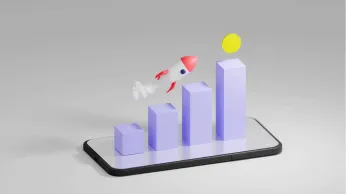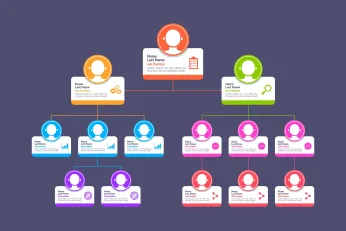Gaji Insentif 101: Panduan untuk Pelaksanaan, Faedah dan Banyak Lagi
Gaji insentif ialah alat yang berkuasa untuk memacu motivasi dan prestasi pekerja. Ketahui cara menyusun program gaji insentif yang berkesan yang sejajar dengan matlamat perniagaan dan memberi ganjaran kepada kejayaan.
Pada halaman ini
Motivasi adalah pemangkin untuk prestasi yang lebih baik. Dalam organisasi, insentif mendorong pekerja ke arah prestasi yang cekap. Pasukan jualan mempunyai tugas besar untuk menjana lebih banyak prospek. Bayaran insentif adalah rangsangan besar bagi mereka dalam proses ini. Kami akan membincangkan gaji insentif dan bagaimana anda boleh mereka bentuk program gaji yang sistematik.
Apakah bayaran insentif?
Bayaran insentif adalah tambahan yang diperolehi oleh ahli pasukan jualan faedah berubah-ubah selain daripada gaji tetap mereka. Ini dikira berhubung dengan prestasi dan sumbangan mereka kepada matlamat perniagaan.
Insentif ini mungkin berbentuk kewangan atau bukan kewangan. Ia boleh diedarkan kepada semua tanpa sebarang kriteria tetap atau kepada ahli tertentu untuk mencapai matlamat tertentu. Jika dilaksanakan dengan baik, perniagaan mungkin menyedari bahawa:
- Pekerja berasa bermotivasi apabila ditawarkan insentif sebagai tambahan kepada gaji tetap mereka. Mereka lebih terlibat dengan kerja mereka dan menyumbang secara berkesan kepada matlamat perniagaan.
- Pekerja yang tidak berminat boleh mengambil daun yang kerap. Ini memberi kesan kepada syarikat dan juga meningkatkan kosnya. Insentif mengurangkan ketidakhadiran dengan meningkatkan semangat kakitangan.
- Ia menggalakkan prestasi tinggi dan perkhidmatan pelanggan yang luar biasa dalam pasukan jualan.
- Ia juga menetapkan tanda aras kualiti dalam wakil jualan untuk memupuk budaya syarikat yang produktif dan kolaboratif.
Tetapi terdapat kebaikan dan keburukan kepada gaji insentif yang perlu diketahui oleh syarikat untuk mereka bentuk pelan gaji insentif yang berstruktur dengan tepat.
Kebaikan dan keburukan gaji insentif:
Berikut adalah kebaikan dan keburukan gaji insentif:
Kelebihan:
Bayaran insentif menawarkan beberapa faedah. Ia meningkatkan produktiviti dan motivasi pekerja. Moral bertambah baik apabila matlamat sejajar dengan objektif syarikat.
- Meningkatkan produktiviti pekerja: Ganjaran menggalakkan kerja keras ke arah matlamat tertentu. Gaji insentif memotivasikan walaupun mereka yang tidak mencapai sasaran.
- Meningkatkan pengekalan pekerja: Menunjukkan penghargaan membina kesetiaan. Pekerja yang dihargai tinggal lebih lama. Ini mengurangkan kos pusing ganti dan meningkatkan kestabilan.
- Meningkatkan iklim organisasi: Gaji insentif meningkatkan persepsi tempat kerja. Ia menarik bakat dengan memotivasikan pekerja. Insentif pasukan menggalakkan kerjasama dan memecahkan halangan.
Kontra:
Bayaran insentif juga menunjukkan beberapa kelemahan. Fokus boleh beralih daripada prestasi kepada ganjaran. Ini mungkin mengurangkan kerjasama dan kualiti.
- Hanya memberikan faedah jangka pendek: Motivasi mungkin tidak kekal. Penglihatan terowong boleh berkembang, menjejaskan kreativiti dan meningkatkan tekanan.
- Menjejaskan tingkah laku etika pekerja: Jalan pintas yang tidak beretika mungkin berlaku untuk mencapai matlamat. Pekerja mungkin berasa tertekan untuk bertindak secara tidak jujur untuk mendapatkan bonus.
- Persekitaran kerja yang tidak sihat: Persaingan boleh memupuk kecurian dan penipuan. Sesetengah pekerja mungkin berasa tidak dihargai. Ini boleh menyebabkan ketegangan dan konflik.
Apakah perbezaan antara gaji insentif, gaji merit dan bonus?
Ini semua cara untuk memberi ganjaran kepada pekerja. Walau bagaimanapun, mereka bekerja secara berbeza. Bayaran insentif adalah untuk mencapai matlamat tertentu. Gaji merit menaikkan gaji pokok berdasarkan prestasi. Bonus adalah ganjaran sekali sahaja.
Ciri | Bayaran Insentif | Merit Pay | Bonus |
Apa itu | Bayar untuk pencapaian tertentu. | Tingkatkan gaji asas untuk prestasi. | Ganjaran sekali. |
Kekerapan | Berbeza-beza; berasaskan projek atau matlamat . | Biasanya, tahunan. | Berbeza-beza; boleh menjadi teratur atau tidak teratur. |
Kesan | Gaji berubah-ubah. | Kenaikan tetap kepada gaji asas. | Bayaran sekali sahaja. |
berdasarkan | Matlamat khusus dan boleh diukur. | Prestasi keseluruhan. | Prestasi individu atau syarikat. |
Contoh | Komisen jualan. | Peningkatan tahunan berdasarkan semakan. | Bonus hari raya. |
Bayaran insentif: Kasual vs. berstruktur
Insentif terdiri daripada dua jenis: kasual dan berstruktur. Insentif kasual adalah hadiah kecil. Baucar adalah contohnya. Mereka menunjukkan penghargaan atas kerja keras. Mereka tidak dijadualkan.
Insentif berstruktur dirancang. Mereka dipantau. Mereka bertujuan untuk mencapai sasaran. Pertumbuhan jualan adalah contohnya. Bonus akhir tahun adalah perkara biasa.
Ciri | Casual Incentives | Insentif Berstruktur |
alam semula jadi | Hadiah kecil, token | Program yang dirancang dan dipantau |
Tujuan | Tunjukkan penghargaan | Mencapai sasaran tertentu |
Jadual | Tidak berjadual | Dijadualkan |
Contoh | baucar | Bonus akhir tahun |
Metrik Sasaran | Tiada Metrik Yang Ditentukan | Jualan, Kepuasan Pelanggan, Kecekapan pengeluaran |
17 Jenis gaji insentif yang boleh anda laksanakan dalam rancangan anda
Insentif boleh berbentuk kewangan atau bukan kewangan. Berikut adalah senarai insentif yang ditawarkan kepada pekerja untuk meningkatkan semangat mereka.
8 Insentif kewangan
Insentif, di mana ganjaran dalam bentuk wang, dipanggil insentif kewangan. Mari kita lihat sebahagian daripada mereka.
- Bonus: Bonus tahunan dikeluarkan dalam banyak organisasi. Ini tidak dikaitkan dengan prestasi tetapi diberikan kepada semua yang sama. Ini melebihi gaji bulanan biasa yang diberikan untuk memotivasikan pekerja.
- Perkongsian keuntungan: Pekerja diberi bonus sebagai peratusan daripada jumlah keuntungan yang diperolehi oleh syarikat. Ini bergantung sepenuhnya kepada keuntungan yang diperolehi dalam setahun. Pembayaran tahunan ini bergantung pada prestasi keseluruhan syarikat dan bukan pada pencapaian sasaran individu. Jika keuntungan lebih tinggi, bonus juga meningkat.
- Perkongsian keuntungan: Perkongsian keuntungan mempunyai syarat asas. Di sini, syarikat mengharapkan pekerja mencapai sasaran tertentu atau membetulkan kriteria prestasi. Apabila perkara yang sama dicapai, pekerja dibayar bonus. Ini tidak boleh dikelirukan dengan perkongsian keuntungan. Pekerja dibayar bonus berbanding prestasi mereka sahaja.
- Insentif tahunan: Bayaran tahunan ini dipadankan sebagai peratusan daripada gaji pekerja. Jumlah sekali gus ini dibayar apabila pekerja mencapai sasaran yang ditetapkan untuk mereka. Ia mungkin atau mungkin tidak dibayar dalam mana-mana tahun tertentu.
- Ganjaran spot: Ganjaran di tempat adalah strategi yang sesuai dengan pekerja. Pengiktirafan segera tanpa menunggu akhir tahun atau selesai penilaian adalah pendorong kepada pekerja. Ini boleh berbentuk monetari atau bukan monetari. Apabila pekerja mencapai sesuatu yang istimewa, dia diiktiraf melalui ganjaran spot.
- Bonus projek: Kategori bonus ini diberikan kepada satu set pekerja yang bekerja pada projek tertentu. Pengurus projek menilai sumbangan setiap ahli pasukan dan menentukan bonus apabila berjaya menyiapkan projek. Peratusan bonus ditetapkan pada permulaan projek.
- Bonus berasaskan merit: Seperti namanya, bonus ini berkaitan dengan prestasi pekerja. Setiap tahun, penilaian dijalankan, di mana ketua pasukan menilai sumbangan pekerja berhubung dengan matlamat dan mencadangkan bidang untuk penambahbaikan. Peratusan tetap gaji dibayar sebagai bonus, yang mungkin berbeza antara pekerja projek yang sama juga.
- Bonus rujukan: Banyak organisasi memilih untuk mengambil kakitangan melalui rujukan pekerja. Pemacu rujukan dijalankan setiap kali timbul kekosongan. Pekerja dibayar bonus untuk setiap orang yang mereka rujuk. Merekrut melalui rujukan menjimatkan banyak wang dan usaha organisasi. Syarikat memberikan kembali kepada kakitangan dalam bentuk bonus.
9 insentif bukan kewangan
Ganjaran selain daripada dalam bentuk wang adalah insentif bukan kewangan.
- Percutian berbayar: Pekerja diberi hari cuti untuk menikmati percutian tetapi masih dibayar untuk hari tersebut. Bilangan hari tetap setiap tahun diberikan sebagai cuti bergaji supaya pekerja boleh berehat dan kembali bekerja dengan motivasi.
- Lawatan syarikat: Syarikat mengaturkan percutian tahunan untuk pekerja dan keluarga mereka. Ini amat bermakna kepada pekerja dan meningkatkan semangat mereka. Ini juga membantu mewujudkan hubungan yang lebih baik dengan kakitangan.
- Kad hadiah: Sesetengah syarikat memberikan kad hadiah untuk jumlah tertentu supaya pekerja boleh menggunakannya untuk membeli-belah. Daripada membeli sesuatu yang menjadi pilihan syarikat, mereka lebih suka menyerahkan pilihan kepada wakil jualan.
- Kad keahlian: Sesetengah syarikat menghadiahkan kad keahlian kakitangan mereka gim atau kelab kesihatan. Ini menunjukkan minat mereka terhadap kesejahteraan pekerja. Bagi pekerja yang sering mendapati diri mereka tinggal lewat, menyepadukan ganjaran seperti kad keahlian untuk kit makan tunggal pra-dibuat boleh menawarkan kemudahan yang amat dihargai yang melangkaui insentif kewangan biasa.
- Hari bekerja dari rumah: Ini adalah insentif unik yang memainkan peranan besar dalam meningkatkan semangat kakitangan. Pekerja boleh memilih hari tertentu untuk bekerja dari rumah mereka. Fleksibiliti ini di pihak syarikat membantu meningkatkan produktiviti kakitangan.
- Trofi: Pekerja yang layak diberikan trofi atas sumbangan mereka kepada pertumbuhan syarikat. Ini mendorong mereka untuk memberi lebih banyak kepada syarikat. Acara tahunan diadakan di mana trofi diagihkan kepada pemain terbaik setiap pasukan.
- Kupon makan: Syarikat memberikan kupon yang boleh digunakan dan bukannya wang tunai di restoran. Pekerja melampirkan lebih banyak nilai pada faedah tersebut daripada pembayaran kewangan.
- Kupon hiburan: Kupon yang boleh digunakan sebagai ganti wang tunai di teater, pusat membeli-belah dan zon hiburan lain juga diberikan oleh syarikat.
- Program latihan: Sesi latihan yang menambah nilai kepada pengalaman pekerja adalah insentif yang bernas. Mereka membantu dalam kemajuan kerjaya dan dialu-alukan oleh pekerja.
Pekerja terpilih yang menunjukkan peningkatan prestasi teladan boleh ditawarkan insentif tersebut. Ini akan memberi motivasi kepada ahli pasukan yang lain juga untuk berusaha lebih untuk layak menjalani sesi latihan sedemikian.
Sebuah pengeluar mesin CNC yang besar di Asia berkembang pesat. Mereka meningkatkan automasi pada mesin mereka. Syarikat itu mempunyai lebih 32 lokasi jualan dan perkhidmatan di seluruh dunia. Mereka memerlukan platform yang kukuh untuk mengautomasikan komisen. Mereka mahu memberikan wakil jualan akses kepada data insentif. Mereka juga mahu mengurangkan masa yang diambil untuk mengira insentif. Matlamat utama adalah untuk mengurangkan keperluan pengurus jualan untuk mengendalikan komisen secara manual.
Penyelesaian:
Syarikat yang digunakan Compass ' penyelesaian pengurusan komisen jualan. Compass memperkemas proses komisen. Ia menggunakan pengiraan komisen dan enjin automasi. Ini memberikan ketelusan. Ia juga menggunakan platform gamifikasi untuk menjadikan jualan menyeronokkan. Prestasi kelihatan. Compass meningkatkan ketepatan pengiraan insentif. Ia mengurangkan masa untuk memproses komisen jualan. Ini dicapai melalui ciri seperti aliran kerja program dan enjin peraturan1. Kelulusan, papan pendahulu, kad skor dan apl mudah alih turut digunakan1. Apl mudah alih membenarkan individu melihat prestasi mereka dalam masa nyata.
Keputusan:
Syarikat memperoleh keterlihatan masa nyata ke dalam pengiraan insentif menggunakan Compass . Mereka juga boleh memantau ketepatan pembayaran. Pasukan jualan terlibat dengan kuiz, lencana dan mata, yang meningkatkan penggunaan program insentif. Syarikat itu juga mengautomasikan proses komisen dari hujung ke hujung. Ini menghilangkan keperluan untuk pemimpin jualan mengendalikannya secara manual.
Kesan:
- Syarikat menyaksikan peningkatan 20% dalam pencapaian kuota dalam masa kurang daripada 90 hari.
- Kelayakan program insentif meningkat sebanyak 22%.
- Penggunaan platform meningkat sebanyak 73%.
Bagaimanakah gaji insentif dikira?
Bayaran insentif berbeza-beza. Ia bergantung kepada syarikat dan peranan. Kaedah biasa wujud. Ada yang mendasarkannya pada prestasi individu. Yang lain menggunakan matlamat pasukan. Keuntungan syarikat juga boleh diambil kira. Pengiraan biasanya berasaskan formula. Ini memastikan ketelusan. Pekerja tahu bagaimana untuk mendapatkan lebih banyak.
Bayaran Insentif = (Prestasi Individu / Prestasi Sasaran) * Amaun Insentif
Bagaimana untuk membuat program gaji insentif?
Setiap organisasi mengikuti langkah-langkah untuk mewujudkan program insentif untuk pekerjanya. Langkah-langkah berikut boleh membantu anda mencipta program insentif.
1. Perancangan
Setiap pelaksanaan yang berjaya bermula dengan rancangan. Program insentif organisasi juga memerlukan perancangan yang betul untuk mengenal pasti jenis insentif, masa untuk pembayaran, dan kriteria untuk memilih pekerja. Perancangan membantu organisasi menetapkan belanjawan untuk perkara yang sama.
Pelan ini juga perlu disampaikan kepada pasukan jualan untuk membolehkan mereka menyumbang dengan berkesan. Peranan yang dimainkan oleh ahli individu dan kedudukan dalam pasukan juga memainkan peranan dalam menentukan jenis insentif. Perancangan insentif harus fleksibel kerana beberapa perubahan mungkin timbul dalam persekitaran perniagaan.
Bagaimana boleh Compass tolong?
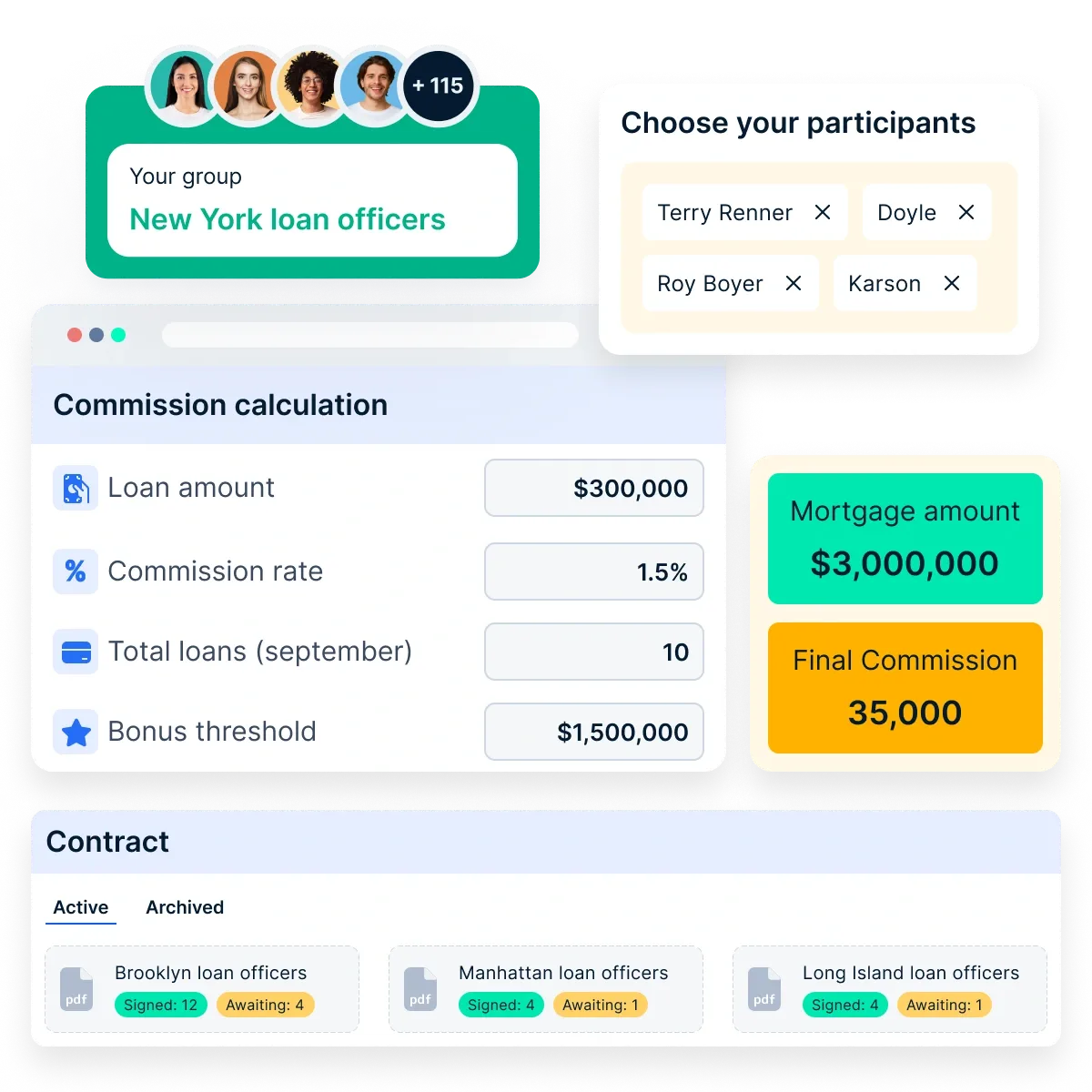
Compass membantu perniagaan merancang insentif dengan mudah. Ia membolehkan mereka memodelkan pelan pampasan yang berbeza dan melihat kesannya sebelum memuktamadkan. Syarikat boleh menguji pelbagai senario untuk mencari yang paling sesuai untuk pasukan mereka.
Mereka juga boleh menganalisis rancangan masa lalu untuk melihat rancangan yang paling berkesan dan menggunakannya sebagai templat. Jika arah aliran pasaran atau matlamat syarikat berubah, Compass memudahkan untuk melaraskan pelan insentif pada bila-bila masa.
2. Pemantauan
Pemantauan berterusan adalah penting untuk memastikan program ini berjalan. Memantau pelan membantu pemimpin membandingkannya dengan prestasi. Organisasi harus mengenal pasti sama ada pasukan jualan memahami rancangan itu. Mereka harus menonton prestasi mereka untuk membantu mereka memenuhi kriteria insentif yang diperlukan.
Pemantauan membawa kepada notis apa-apa kesilapan dalam pelan supaya anda boleh membetulkannya dengan serta-merta. Pelaksanaan pelan yang berjaya memerlukan sokongan semua ahli pasukan, dan pemantauan membantu mencapai matlamat ini.
Bagaimana boleh Compass membantu memantau rancangan?
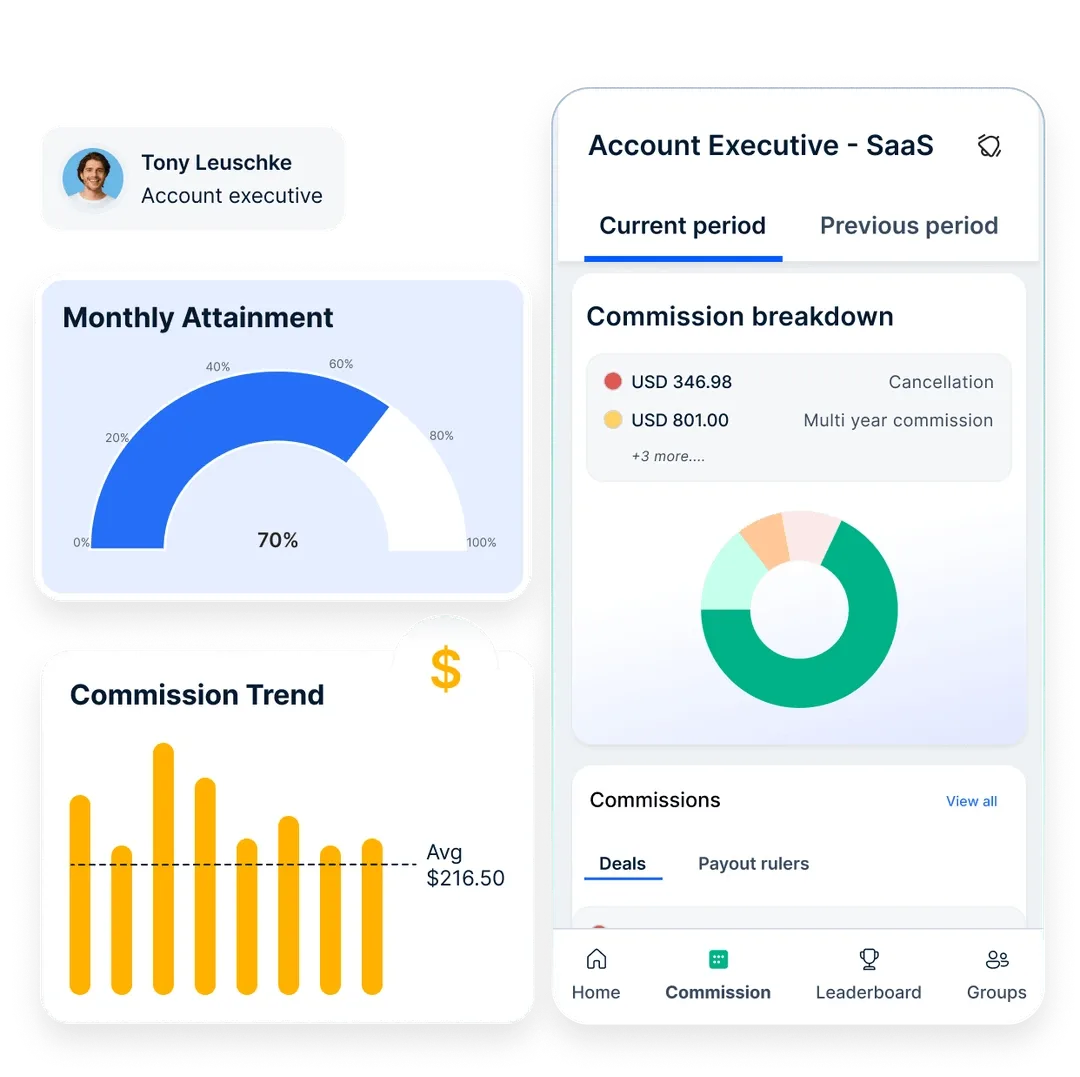
Compass membantu dengan pemantauan dengan menyediakan laporan terperinci tentang pencapaian kuota, prestasi wilayah dan keberkesanan rancangan. Ia menjejaki kemajuan wakil jualan pada apl mudah alih, memberikan pengurus, pengarah dan pasukan RevOps pandangan yang jelas tentang prestasi.
Pasukan kewangan boleh menganalisis kesan hasil komisen dengan laporan tersuai untuk perancangan belanjawan yang lebih baik. Dengan cerapan ini, pemimpin boleh mengenal pasti jurang dengan cepat, membuat pembetulan dan memastikan pelan insentif kekal berkesan.
3. Penilaian
Penilaian juga merupakan sebahagian daripada mewujudkan program insentif. Sesetengah organisasi mempunyai ulasan pertengahan tahun dan memberikan insentif. Penilaian boleh dilakukan selepas tempoh ini untuk menentukan sama ada program ini sesuai.
Ia membantu menganalisis prestasi pasukan berhubung dengan rancangan itu.
Antara soalan-soalan yang perlu anda tanyakan pada langkah ini ialah:
- Adakah program ini boleh dilaksanakan?
- Adakah ia membenarkan kebebasan yang cukup untuk pekerja bekerja pada matlamat?
Sekiranya keputusan penilaian menunjukkan bahawa program insentif berjalan lancar, perkara yang sama dapat diteruskan. Jika tidak, perubahan perlu dibuat untuk menjadikan program insentif sesuai untuk pekerja dan perniagaan.
Bagaimana boleh Compass membantu dengan penilaian?
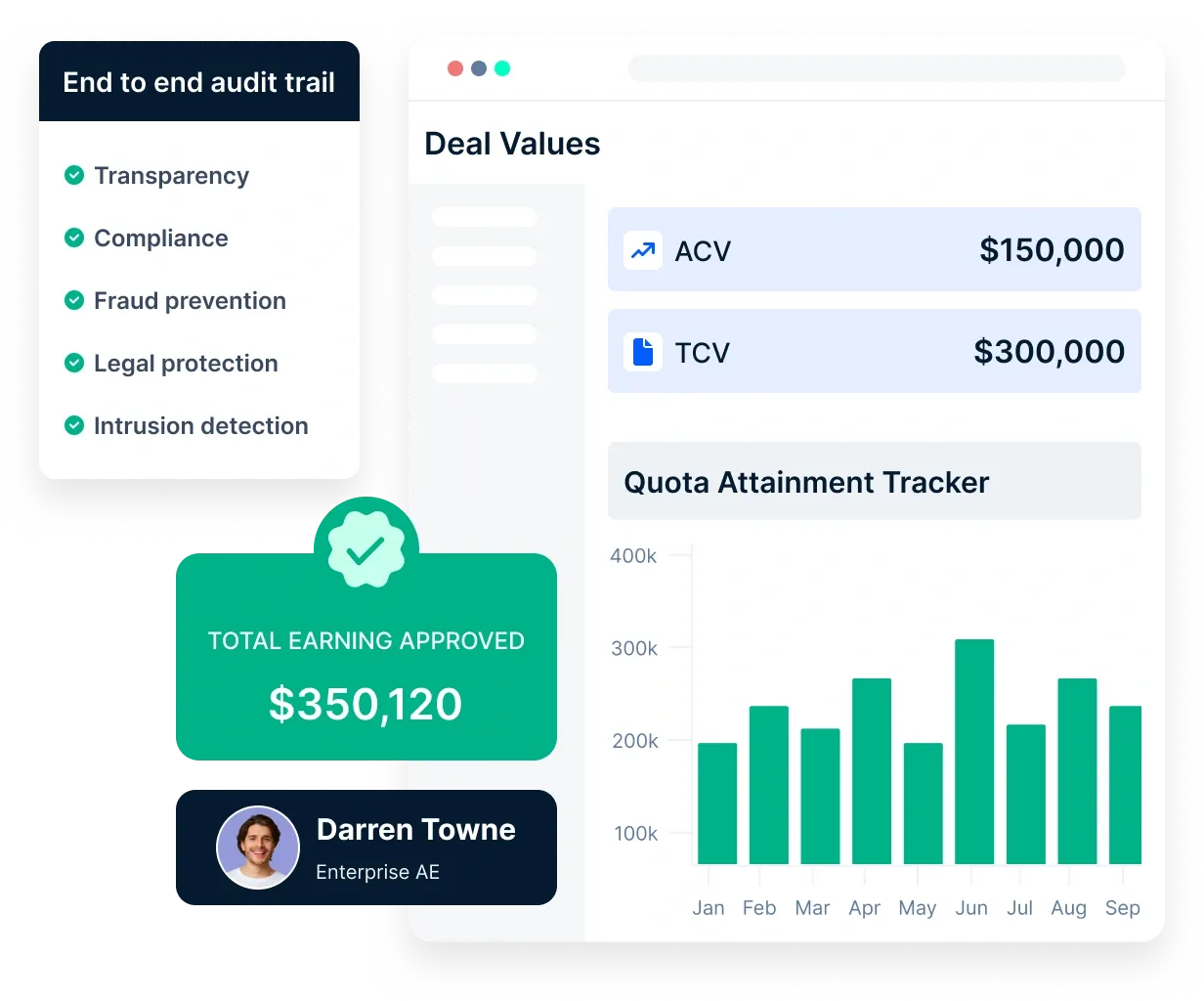
Compass membantu organisasi menilai program insentif mereka dengan menyediakan pelaporan lanjutan, penjejakan perbelanjaan komisen, analisis ramalan dan jejak audit. Dengan laporan komisen YTD dan cerapan wilayah, perniagaan mendapat keterlihatan tentang cara komisen menyumbang kepada hasil.
Pelaporan kewangan yang tepat memastikan perancangan dan analisis yang lebih baik, manakala analisis ramalan membolehkan pasukan kewangan menilai kesan hasil komisen untuk peruntukan belanjawan masa hadapan.
Selain itu, ciri jejak audit menjana laporan terperinci tentang perubahan pada pelan komisen jualan, pelarasan dan sejarah pembayaran, memastikan ketelusan dan pematuhan. Cerapan ini membantu organisasi menentukan keberkesanan program insentif mereka dan membuat pelarasan yang diperlukan untuk penjajaran yang lebih baik dengan matlamat perniagaan.
4. Pengoptimuman
Peringkat penilaian membantu mengenal pasti program terbaik untuk organisasi. Insentif bukan bayaran sekali sahaja. Ia adalah proses yang berterusan dan mungkin memerlukan semakan dengan kerap.
Penanda aras untuk prestasi mungkin menjadi usang bergantung kepada keadaan. Syarikat harus tiba di program pelan optimum untuk menjadi tawaran yang bermanfaat kepada pekerja.
Perniagaan anda harus mengenal pasti dan merapatkan jurang dalam sistem jika ada. Mengoptimumkan bantuan program insentif dalam proses ini.
Ia juga penting untuk belajar bagaimana untuk mewujudkan program gaji yang baik. Petua yang disebutkan di bawah boleh membantu!
Membungkus
Bayaran insentif adalah perangsang dan mendorong pasukan jualan untuk menyumbang dengan berkesan. Ini adalah salah satu cara terbaik untuk mendapatkan pekerja lebih dekat dengan matlamat perniagaan. Program insentif harus menggabungkan perkara-perkara yang disebutkan di atas untuk menjadi berkesan.
Program insentif yang baik memberi manfaat kepada organisasi dan juga pekerja. Sekiranya anda belum merancang rancangan anda, ingat perkara di atas untuk melaksanakan rancangan yang tersusun dengan baik.
Soalan lazim
1. Adakah insentif dibayar setiap jam?
Tidak, gaji insentif biasanya bukan setiap jam. Ia biasanya terikat dengan matlamat prestasi tertentu.
2. Apakah itu gaji insentif?
Bayaran insentif ialah pampasan yang direka untuk memotivasikan pekerja mencapai matlamat tertentu dan meningkatkan prestasi.
3. Adakah gaji insentif dinaikkan?
Tidak, gaji insentif bukan kenaikan. Kenaikan ialah kenaikan kepada gaji pokok. Bayaran insentif adalah berubah-ubah dan bergantung pada prestasi.
4. Apakah yang anda maksudkan dengan gaji insentif?
Upah insentif ialah pendapatan berdasarkan melebihi standard pengeluaran atau jualan yang ditetapkan, mendorong pekerja untuk menjadi lebih produktif.
5. Adakah bayaran insentif berbaloi?
Ya, gaji insentif boleh berbaloi. Kajian menunjukkan pelan insentif yang dioptimumkan boleh meningkatkan jualan dengan ketara dan meningkatkan motivasi pekerja.
6. Mengapakah organisasi menawarkan gaji insentif?
Organisasi menawarkan gaji insentif untuk memacu pertumbuhan hasil, memotivasikan jurujual, menyelaraskan tingkah laku pekerja dengan matlamat syarikat dan meningkatkan prestasi keseluruhan.
Apakah yang dianggap sebagai gaji insentif? Bayaran insentif termasuk bonus, komisen, perkongsian keuntungan, gaji berasaskan prestasi dan ganjaran lain yang terikat untuk mencapai sasaran tertentu.
Adakah syarikat dikehendaki menawarkan gaji insentif? Tidak, syarikat biasanya tidak perlu menawarkan gaji insentif. Ia biasanya mengikut budi bicara majikan, walaupun kontrak pekerjaan mungkin menetapkan sebaliknya.

